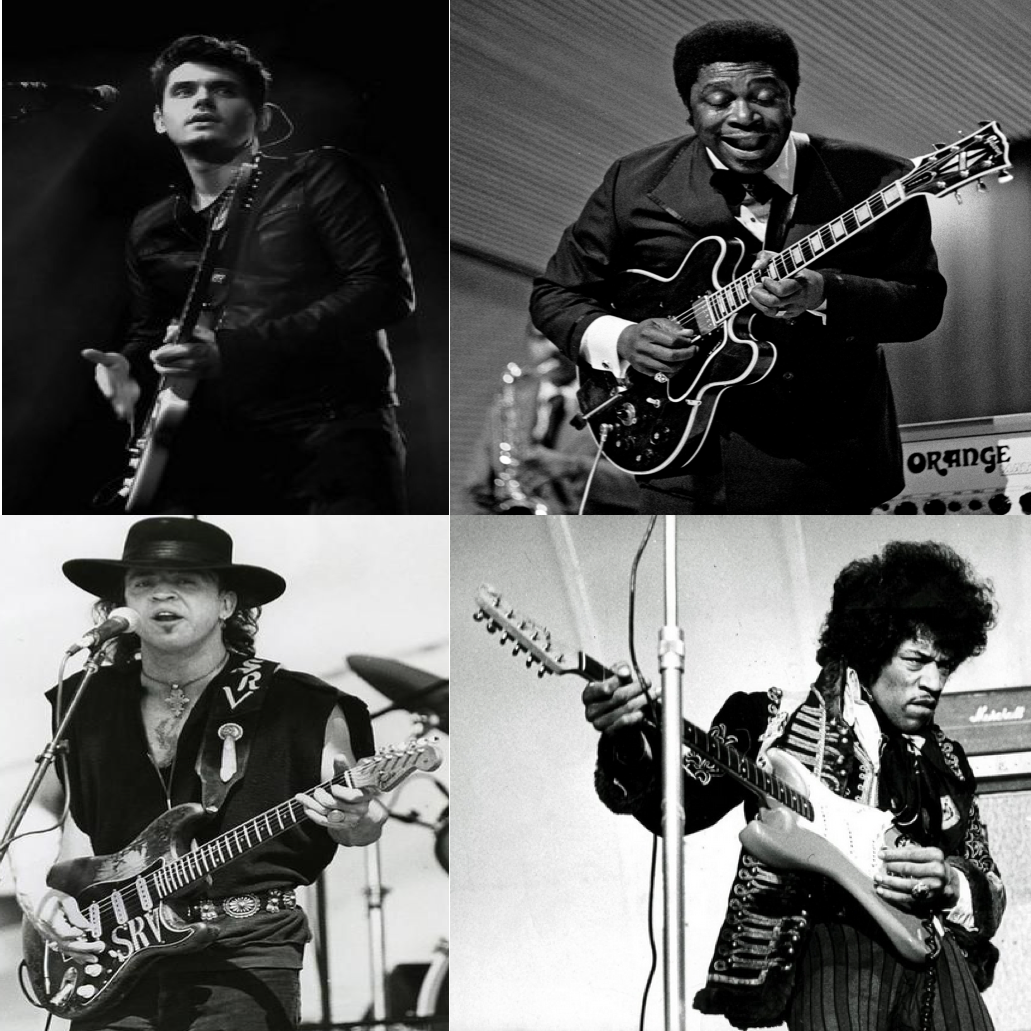
Every guitarist experiences a common barrier at a certain point in their musical journey -- we get paralyzed by the sheer number of things there are to learn on the guitar. This roadblock can leave you aimlessly practicing things that you will never put to use, zapping your motivation to play. This usually occurs when you’ve learned all your open chords, your barre chords, and a couple of solos. The question, “what next?” inevitably pops up.
One great way of overcoming this hurdle is to find an artist that you look up to and model your playing after him/her. Finding an artist to act as an influence can rapidly improve your playing as you will have a ton of new songs to learn, you will constantly have objectives to work towards.
Expanding beyond that, we can even study our favorite artist’s influences. Exploring these influences will result in a couple of things. First, you will see where many of his/her techniques come from; you will learn about the techniques they picked up and the techniques that they’ve rejected along the way. Frequently, you will even encounter a different method of performing the same technique! Studying your favorite artist’s influences can lead you down a rabbit hole -- you may even end up listening to artists from the early 1900’s! This knowledge of how music evolves will help you grow as a musician. In all likelihood, you will discover some music that really speaks to you along the way!
For this series of articles, we have chosen John Mayer to model our playing after. Since we’ve already gone through Mayer’s most commonly used techniques and the songs that he uses them in, this article will focus on Mayer’s influences. We will learn about who these musical giants are, how they’ve changed the way future generations of guitarists play the guitar, and how Mayer has incorporated their playing styles into his own.
Like many musicians, John Mayer has many influences; he himself has stated that he draws inspiration from artists across all genres including Hip Hop, R&B, Jazz, Rock, Blues, and Soul. He has also said that he draws musical inspiration from stand up comedians, but I’m not quite sure how that works. While it’d be great to go through all of the different individuals who have influenced Mayer’s style of playing, I suspect that doing so would leave us with a 300 page textbook, so to keep this article brief, we’ll focus on three musicians who seem to be his main influences on the guitar: B.B. King, Jimi Hendrix, and Stevie Ray Vaughan.
1. B.B. King: The King Of The Blues
It is no secret that Mayer’s guitar playing is heavily influenced by Blues musicians and there aren’t many Bluesmen out there who haven’t been influenced by B.B. King in some form. To put it modestly, B.B. King is a legend amongst legends.
Who is B.B. King?
B.B. King was an American Blues singer, composer, producer, guitarist, and Rock and Roll Hall of Fame inductee who actively performed from 1948 to 2015. He was known as one of the three kings of Blues guitar; the other two being Albert and Freddie King. B.B. King was born in 1925 on a cotton plantation in Mississippi. He first became interested in playing music when he joined a gospel choir at a young age. During his time in the choir, the resident church minister taught King his first three guitar chords, which was more or less the only form of music lessons King ever received. He then developed a passion for playing the guitar and improved his playing by learning songs by listening to records or by trading licks with fellow musicians.
He kick-started his music career by working in radio stations as a singer and DJ. During this time, he encountered many musicians from different walks of life and picked up new skills, including record production. He also spent a lot of time continuing to hone his craft on the guitar. After spending a few years working in radio, he went on to making records, which led to several Billboard topping albums, many international tours, and worldwide fame.
One of the things that King was known for, besides being a great Blues guitarist, was the number of shows he would put on in a single year. On average, he’d play 200 shows a year and the most shows he’d ever played in a single year was 342. He was known to do this all the way into his 70’s and even at the end of his life, he was on tour before he had to cancel his remaining shows due to health problems. King eventually passed away in 2015 at the age of 89.
How did B.B. King change the way we play guitar?
There were a couple of things that King did on the guitar that forever changed the way guitarists approached the instrument. The first thing he popularized was the use of smooth, slow, melodic string bends. While this is a commonly used technique these days, King was one of the first guitarists to really popularize this technique. He’d also often switch between half-step, whole-step, and 1 ½ step bends. While this technique can be heard on almost all of King’s songs, a couple of songs that highlight this technique include “The Thrill is Gone,” “Lucille,” and “Hummingbird” (which happens to be a collaboration with John Mayer).
Another technique King was known for was his shimmering vibrato. This technique can be heard in almost all of his songs as well, and there is even a video on YouTube where King himself explains this technique. This technique has been adapted by guitarists across all genres.
Lastly, B.B. King popularized the use of a specific scale pattern, which is actually now known as the B.B. King Blues Box. Obviously, King wasn’t the first guitarist to use this pentatonic scale, but he played almost exclusively in this box. This simple fact is pretty amazing because he made an entire career out of it! This is a perfect example of working well with what you know and creatively expressing musical ideas in spite of limitations.
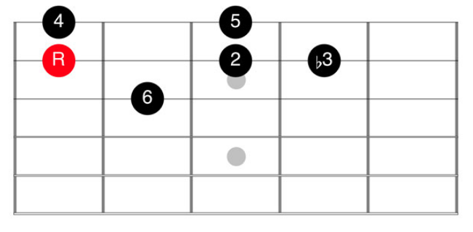
B.B. King in John Mayer’s playing
Like every other Blues musician out there, Mayer is heavily influenced by the style of B.B. King. This is apparent in quite a number of Mayer’s songs. The first example I will point to is a comparison between King’s “Lucille” and Mayer’s “Out Of My Mind.” The opening line of both songs have essentially the same intervallic movement, just in different keys. Throughout the rest of Mayer’s “Out Of My Mind,” you will hear many slow bends and vibratos which would have made King himself proud. Another one of Mayer’s songs that has a strong B.B. King touch is “Gravity,” where the intro line combines smooth bends with bend vibratos, and the line is also essentially in a modified B.B. King Blues Box. The same thing can be said for “Rosie” from the album The Search For Everything.
Without a doubt, B.B. King was a huge influence in Mayer’s slow blues, smooth guitar solo playing style. However, in terms of rhythm guitar and playing chords, King himself admitted that he can’t play chords well. For John Mayer’s rhythm guitar, we’ll have to look elsewhere to see where he picked up his iconic moving-chords style of playing.
2. Jimi Hendrix: The Wild Man
Jimi Hendrix is a name that is synonymous with the guitar, and it’s all thanks to number of innovations Hendrix brought to the instrument, both in terms of technique and technology. In his short career, Hendrix managed to forever change the way all guitarists approach the instrument.
Who is Jimi Hendrix?
Jimi Hendrix was an American guitarist, singer, songwriter, and Rock and Roll Hall Of Fame inductee. He got his first acoustic guitar at the age of 15, although he had shown an interest in the instrument since he was in elementary school. Once he got his hands on the instrument, it is said that he would spend hours upon hours playing it, often to the annoyance of his father. He picked up the skills of playing the instrument by watching other, more experienced players, and he’d also learn songs by listening to records and trying to recreate them on his guitar. When he was first starting out, his influences were Blues legends like B.B. King, Muddy Waters, Howlin’ Wolf, and the mystical Robert Johnson.
Before long, Hendrix realized that he had to get his hands on an electric guitar as it was hard to hear the acoustic guitar in a band setting. This led him to his first electric guitar, which was a Supro Ozark. When that guitar was stolen after he left it backstage one night, he acquired a red Silvertone Danelectro. An interesting point to make is that Hendrix was left-handed, but since most guitars were, and still are, made for right-handed players, he spent a lot of his time playing right-handed guitars upside down. He was also known to be ambidextrous with the guitar as his father used to punish him for playing the guitar as a left-handed player. This was during a time where left-handed individuals were often discriminated against. The story goes that Hendrix would be practicing his guitar in a left-handed manner for hours, and when he’d hear his father walk into the room, he’d switch the guitar over and play it right-handed. This constant switching between lefty and righty playing could explain his in-depth understanding of the fretboard and music theory, even though he never took any formal lessons.
At age 19, Hendrix enlisted in the military in order to avoid legal trouble (he had been caught riding in stolen vehicles twice). He trained as a paratrooper in the prestigious 101st Airborne Division. During this time, he met Billy Cox, who would later become his bassist in a few of his future bands. After completing his paratrooper course and attaining his Screaming Eagles patch, Hendrix was honorably discharged from the army as his superiors had decided that Hendrix had no interest in serving in the army.
After getting discharged from the military, Hendrix started playing gigs on the Chitlin’ and Harlem Club Circuit, performing with acts like The Isley Brothers, Little Richard, and Curtis Knight. However, throughout his time playing as a sideman in different acts, he’d always had the urge to write songs and perform his own material. On the suggestion of his future manager Chas Chandler, Hendrix then relocated to England in 1966. It was during this time that he finally found commercial success with his new band, The Jimi Hendrix Experience. Their debut singles “Hey Joe” and “Purple Haze” broke into the UK charts, and the full-length album that followed, “Are You Experienced,” spent 33 weeks on the UK charts, peaking at number two.
However, the success that the group found in England did not translate over to the US. Hendrix really only gained fame in the US after his legendary performance at the Monterey Pop Festival in 1967, where he lit his guitar on fire at the end of the performance. The image of him standing over his guitar ablaze will forever live on in Rock and Roll history books. That performance introduced American audiences to a whole new sound and a new image of what an African American pop icon could be.
The following year, The Jimi Hendrix Experience released their third studio album, “Electric Ladyland,” which reached number one on the US charts. At this point, Hendrix was quickly becoming pop music’s biggest star, and his fame really peaked when he headlined the infamous 1969 Woodstock Festival and the Isle Of Wright Festival in the following year.
Tragically, Hendrix passed away on September 18, 1970, at the young age of 27 due to an accidental drug overdose. He was working on a new album around that time and was at the height of his career. While we may never see the full potential of Jimi Hendrix, his short career had forever changed the way people play guitar.
How did Jimi Hendrix change the way we play guitar?
Jimi Hendrix has long been cited as the most influential guitarist of all time. Besides changing the techniques used to play the guitar, he also pioneered many technologies we use today to make our electric guitars have distinctly different sounds. Let’s first take a look at the different techniques that he introduced to the world.
One of the key techniques that was made popular by Hendrix is the use of the thumb to fret notes. If we’re looking at the guitar solely from a classical standpoint, this technique is considered a bad technique, and it’s something that should be avoided. But of course, Hendrix wasn’t classically trained, so there wasn’t anyone around to tell him not to do it. Today, this method of fretting notes with your thumb is popular amongst guitarists across all genres. Having the ability to use your thumb to fret notes will free up your other fingers to play ornamentations within your chord shapes. Simply put, being able to use five fingers is always better than four. Hendrix also popularized the method of outlining chords with pentatonic scales after the chord is played. This technique can be heard in almost all of his songs, but the most obvious ones are “Little Wing” and “Bold As Love.” This method of mixing chords and scales is actually the thing that really made him stand out amongst the rest of the guitarists of his generation. You have to remember, Hendrix was active during an era where guitar legends like Eric Clapton, Carlos Santana, and George Harrison were active too, yet they all looked up to Hendrix as if he was some kind of a guitar God.
Another technique that Hendrix used a lot were double stops. This technique is when two notes are played at once, resulting in a sound that is fuller than a single note, but not as full as a chord. Double stops can be heard throughout all of Hendrix’s songs and again, this technique is now very popular amongst guitarists across all genres.
In terms of developing technology for guitar and sound recording, Hendrix pioneered many things that are considered essential these days. The first thing was the use of guitar effects pedals and Wah Wah pedals. Those guitar effects pedals that we all know and love these days were actually brand new inventions during Hendrix’s time, and he, along with other guitarists like Eric Clapton, popularized their usage. Hendrix also popularized the use of high-gain, overdriven amps, and the usage of amplifier feedback (which was traditionally considered undesirable). In the recording studio, Hendrix was known to play around with studio effects like flanging and phasing within his records. You can hear a phasing effect in many of his recordings, including the bridge section of “Bold As Love.”
Jimi Hendrix in John Mayer’s playing
All of the techniques and technologies mentioned above can be observed in Mayer’s playing. Just like Jimi Hendrix, Mayer loves to use double stops, and this can be heard in songs like “City Love,” “Vultures,” and “Slow Dancing In A Burning Room.” Mayer also loves to mix between chords and scales, and this can be heard in songs like “Gravity,” “Another Kind Of Green,” “Slow Dancing In A Burning Room,” and of course, his cover of “Bold As Love.” Mayer also always uses his thumb to fret notes on the sixth string, leaving his other fingers free to play ornamentations around chord shapes. In terms of the technology, Mayer will occasionally use high-gain, overdriven amps for his live shows, and he has hundreds, if not thousands, of guitar pedals. Mayer also does use studio effects in his recordings, but they’re usually not as in-your-face as Hendrix’s.
Without a doubt, Hendrix has played a huge part in shaping the way Mayer plays electric guitar. However, it’s not just Mayer that has been influenced. Literally every guitarist that came after Hendrix has been influenced by him, including the last artist that we’ll be looking at.
Learn with LPM
If you are looking to feel comfortable with playing basic major and minor chords, power chords, and apply different strumming techniques to your practices with Ze, check out his course called Rhythm Guitar
3. Stevie Ray Vaughan: Texas Bluesman
John Mayer’s passion for the guitar can be traced back to a single individual: Stevie Ray Vaughan. It is pretty well documented that Mayer’s first brush with blues music came in the form of a cassette tape of Vaughan’s music loaned to him by a neighbor. From there, he fell in love with Vaughan’s high-energy style of Texas blues and developed the desire to play the guitar just like Vaughan. To give you an idea of how much Vaughan inspired Mayer, one of Mayer’s first electric guitars was a Stevie Ray Vaughan signature model stratocaster and Mayer even has an “SRV” tattoo on his arm. I wouldn’t even tattoo my wife’s name on my body, let alone the name of a musician (well, maybe I might). Vaughan’s music was also responsible for bringing Mayer through the same musical exploration journey we’re taking now, and through that journey, Mayer discovered players like Hendrix, the three Kings, Buddy Guy, Otis Rush, and Lightnin' Hopkins.
Who is Stevie Ray Vaughan?
Stevie Ray Vaughan was an American musician, singer, songwriter, record producer, and Rock and Roll Hall Of Fame inductee. Born in Dallas, Texas in 1954, Vaughan was first introduced to the guitar by his brother, Jimmie, at the age of seven. By the time he was a teenager, Vaughan had already become impressively competent at the instrument and he eventually dropped out of high school to pursue a career in music. He spent seven years playing with different bands in the Austin club circuit before settling down and forming his own band, Double Trouble.
After some reshuffling in the band’s lineup, Double Trouble eventually became the resident band at the Rome Inn, which was one of Austin’s most popular music venues. However, while the band was very popular in the city of Austin, they were still unable to break into the mainstream.
That slowly changed after their performance at the Montreux Jazz Festival in 1982, where Vaughan met David Bowie and subsequently was invited to sit in as a session guitarist on Bowie’s latest album. Vaughan also met Jackson Browne at the festival, and after a long jam session, Browne invited Double Trouble to use his personal recording studio. The recordings that came out would eventually be part of Double Trouble’s debut album, “Texas Flood.”
Upon its release, “Texas Flood” peaked at number 38 on the charts and sold over half a million copies. The album also did well amongst the critics and word of Vaughan’s aggressive, fast, and highly skilled guitar playing started to spread even more. This eventually led to several other full-length albums and numerous sold out concerts around the world.
Unfortunately, Vaughan was tragically killed in a helicopter crash in 1990. He was 35 at that time, and just like Hendrix, he died at the peak of his career. While we may never know how far Vaughan would have taken his musical talents, his impact on Blues music has had far reaching consequences resulting in the continuation of the old Blues traditions.
How did Stevie Ray Vaughan change the way we play guitar?
Like many Blues guitarists of that era, a lot of Vaughan’s playing was heavily influenced by Jimi Hendrix and B.B. King. Vaughan even has covers of Hendrix’s “Little Wing” and “Voodoo Child,” which to be honest, are the two best covers of those songs I’ve ever heard. Vaughan used many of the techniques made popular by Hendrix and King, which included techniques like fretting with your thumb, string bends, vibratos, etc. In fact, the reason for how John Mayer himself found out about musicians like Hendrix and King was through the music of Stevie Ray Vaughan.
While much of what Vaughan did can be attributed to the giants that came before him, he too managed to make a huge impact in the musical world. The first thing he was largely responsible for was the 1980’s Blues revival. The Blues had largely become out of style, even when Hendrix was still around, but the ferocity and incredible skill that Vaughan displayed in his Blues music brought it back into the limelight. He also redefined what Texas music sounded like, and to commemorate his contributions, they erected a statue of him in the city of Austin.
In terms of contributions to the guitar, he popularized a blazing fast, aggressive style of playing Blues guitar that has now become synonymous with Texas Blues. Generations of guitarists across all genres that came after him have copied his licks and incorporated them into their own playing. I don’t think people even knew it was possible to play the Blues at those speeds before Vaughan, and even today I find it difficult to play many of his songs. Vaughan also popularized the use of the Ibanez TS-808 Tube Screamer Overdrive pedal, which is now one of the most common overdrive pedals used.
Stevie Ray Vaughan in John Mayer’s playing
There are two things strikingly similar between John Mayer and Stevie Ray Vaughan. The first is their singing styles, which Mayer himself has admitted to shaping his vocal tone after Vaughan’s. The other is their overdriven guitar tone and you can hear the similarities in Mayer’s “Out Of My Mind.”
In that same video, the fast blues lick that comes at the 6:43 mark was lifted directly off a page of Vaughan’s book of blues licks. Mayer also executes a tremolo picking technique at 6:50, which is a favorite technique of Vaughan.
In terms of gear and guitar setup, Mayer tries his best to get as close to Vaughan as possible, going so far as to hire Vaughan’s guitar technician to work on all of his guitars, pedals, and amps.
The Right Kind of “Influencers”
While we’ve only covered three of John Mayer’s influences, it’s important to state that they are only a small influence in Mayer’s overall artistic style. We didn’t really look at Mayer’s songwriting craft (in which he is widely considered a master), nor did we look at the evolution of his singing technique over the years. The thing about influences is, while a few individuals may always play a big part in your sound, your style will constantly evolve through the years. Even now, Mayer’s guitar playing is changing to incorporate more chromatic lines thanks to his time with Dead and Company and Jerry Garcia’s influence. If there is one thing that’s constant in playing music, it’s that change is the only constant.
Stay tuned for more John Mayer articles and videos!
About the Author: Ze
Ze first began his journey playing original music and top 40s pop tunes around the country's popular venues. Eventually, through the music of John Mayer, he found a strong attraction to blues music. Ze has years of experience teaching beginners and intermediate guitarists. Currently with Liberty Park Music he is teaching Introduction to Guitar Playing for Complete Beginners, Rhythm Guitar to learn about strumming, chords and more, Guitar Essentials as a fast-track review course, and lots of Song Lessons on pop and rock hits.

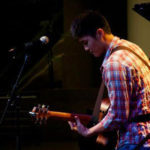
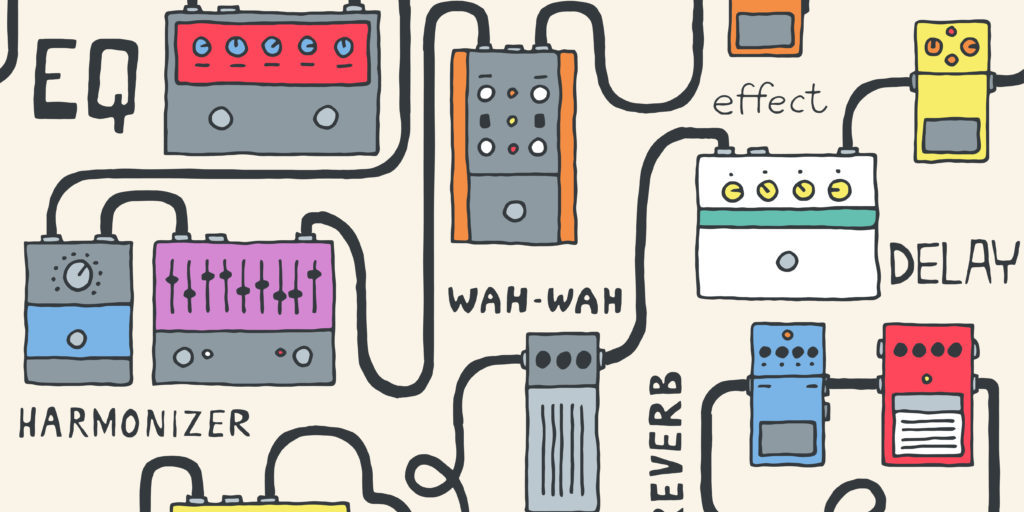

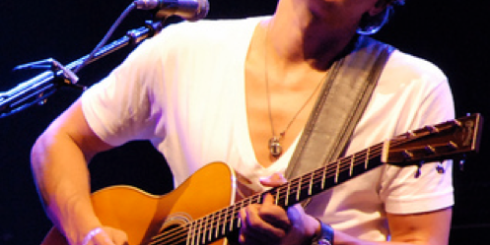
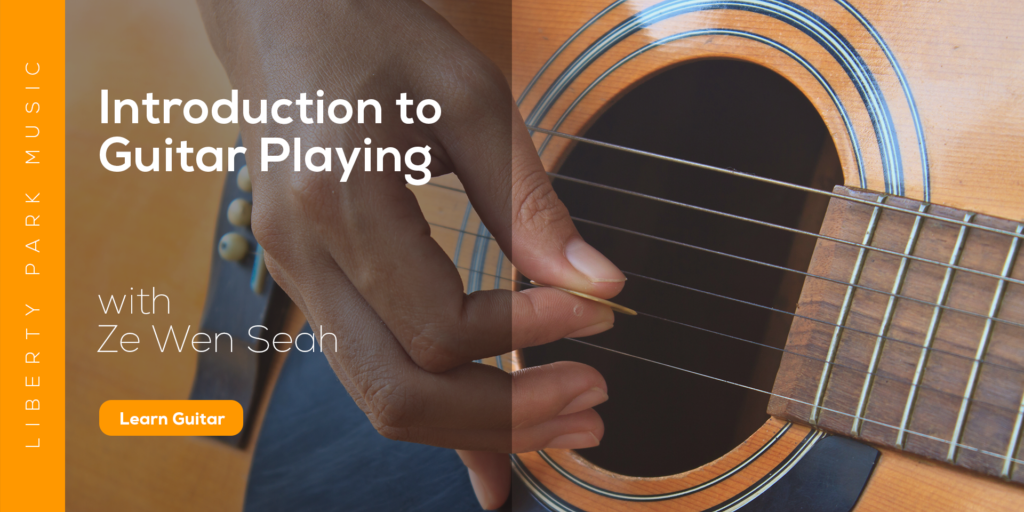

thank you for this article this helps me a lot
thank you for this amazing article this is very helpful